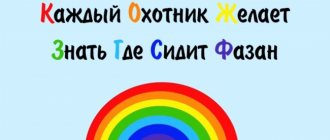Memory is the process of storing, analyzing and recalling past experiences. Thanks to the ability to remember information, a person can accumulate knowledge and evolve. Many details are stored in our minds every day, making it easier for us to make decisions and find a way out of the current situation.
Types of memory
There are several types of memory, depending on the storage period of information, the object of memorization, the form of storing information in memory, etc.
By shelf life
- Instant memory is image memory. Perception of information by the senses, without any processing.
- Short-term. Quickly remember information for a short period of time. This could be a phone number, date, password, address.
- Long-term. Deep memorization of important details that can influence later life. It is formed by separating fragments from short-term memory and moving them by force of will into long-term memory.
By object of memorization
- Visual: retention and reproduction, if necessary, of visual symbols (memory of faces, etc.).
- Auditory: storing sound images and impressions.
- Tactile: retention of sensations obtained when touching something.
- Emotional: preserving the sensations obtained during a shock, a surge of feelings.
- Gustatory: remembering taste sensations.
- Olfactory: perception of smells.
- Motor, or motor: remembering, storing and reproducing various movements.
According to the form of storing information in memory
- Figurative: the brain has the ability to collect scraps of sensory impressions and create images based on them that provide a reference to the necessary information.
- Verbal-logical: remembering and reproducing thoughts in the process of thinking, thinking, reading books, etc.
On the participation of the will in memory processes
- Voluntary: with the application of effort and the formation of a specific goal. For example, when preparing for an exam.
- Involuntary: when information is stored in the head automatically.
On the participation of thinking in memory processes
- Mechanical: thorough memorization of information without one’s own associations and without resorting to personal experience.
- Logical: the main thing is the essence of what you need to remember, without cramming.
- Associative: Using personal experience to connect with new experiences.
Briefly, the information given above can be presented in the form of a table.
| Criterion | Types of memory |
| By information storage period |
|
| By object of memorization |
|
| According to the form of storing information in memory |
|
| On the participation of the will in memory processes |
|
| On the participation of thinking in memory processes |
|
Peculiarities of memory of preschool children
Memory development in preschool children occurs involuntarily. As a rule, children do not set themselves the goal of remembering something.
Schoolchildren's memory is already sufficiently developed to build logical chains, analyze information and draw conclusions.
The perception of information directly depends on the age of the child:
0-2 years. In the first year of life, motor memory develops: the child actively remembers gestures and movements and tries to repeat them. From 1 year to 2 years, the central nervous system develops, the amount of memorized information increases;
2-4 years. During this period, the development of mechanical memory occurs. After two years, the child begins to remember more words and build logical chains;
5-6 years. During this period, predominantly involuntary memory is involved: the child can already build on his own impressions and personal experience. He remembers best the information that interested him;
6-12 years old. During this period, long-term memory improves significantly. Children of primary school age are capable of voluntary memorization and are ready to make the necessary efforts to remember what they are given. However, information that is more interesting to them is still absorbed faster.
Development of child's attention
Attention is one of the most important higher mental functions. Teaching a child to concentrate and maintain attention is one of the main tasks of preschool education, which parents usually have to solve.
At the same time, abandoning things halfway is the absolute norm for a child at such an early age. He switches attention very quickly. What can you do to ensure your child finishes what he starts?
Talk about the results of the child’s work. Together, select those drawings and crafts that the child himself considers complete. Ask for an explanation of what each one means. Unfinished drawings can be completed together and a story or story can be put together from them.









